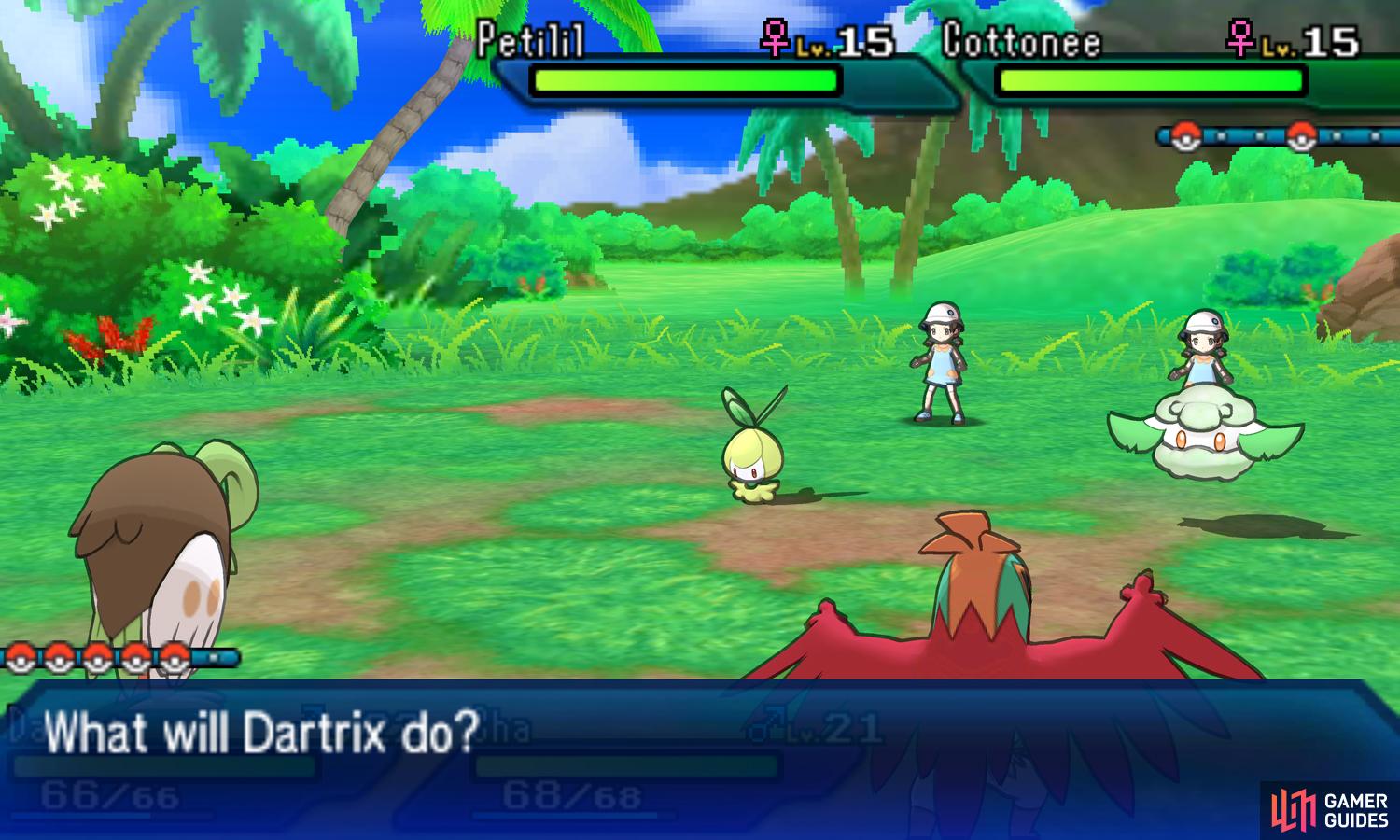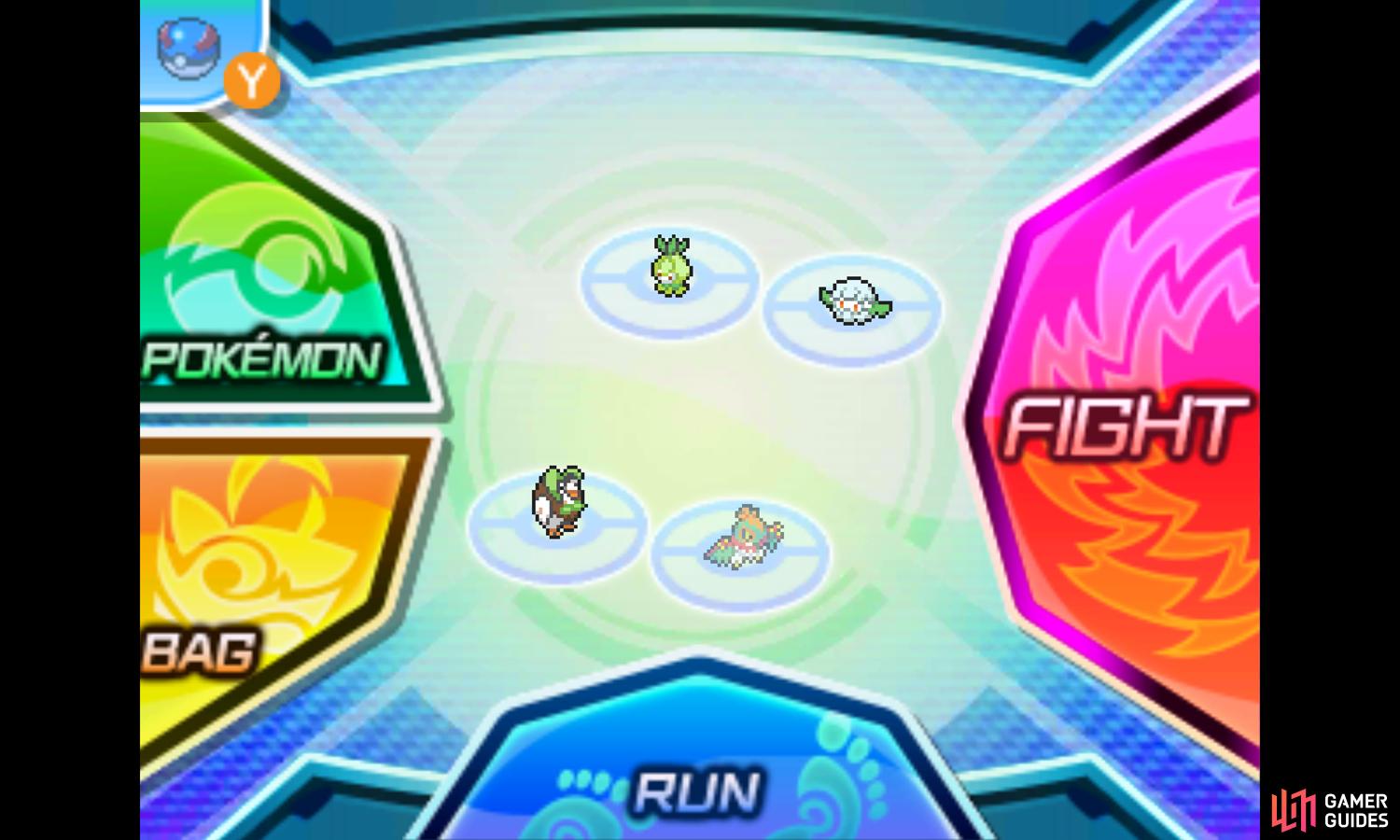(1 of 2) Double Battles are a rare occurence in the story, but they do exist!
Double Battles are a rare occurence in the story, but they do exist! (left), (right)
First appearing in Ruby and Sapphire, over a decade ago, Double Battles are just as you’d expect: two Pokémon versus two Pokémon in the same battle.
There are two types of Double Battles–normal ones between you and a single opponent or Multi Battles that can be between 4 trainers, two on each side, or sometimes 2 versus 1 (or the other way round). Either way, the mechanics are the same; the difference is who controls what Pokémon.
In Double Battles, the first two Pokémon in your party are sent out simultaneously. Each turn, you pick one move for each Pokémon and your opponent does the same. Because you’re facing against two Pokémon, you can often select a Pokémon to target, although some moves offer no choice.
Battles play out similarly to Single Battles, with the Pokémon with highest Speed moving ahead of the others. At the end of each turn, if one or more Pokémon on either side has fainted, the trainer must send out enough Pokémon to fill the spaces (or their last remaining Pokémon).
Intricacies of Double Battles¶
So far, easy to follow, right? On paper, Double Battles shouldn’t sound much more complicated than normal. You’ve just got one extra Pokemon on your side and one extra Pokemon on the opponent’s side. No biggie!
This is where you’re wrong though–well, when battling human trainers, less so against computer-controlled trainers. There’s a reason why Double Battles is the chosen battle format in the official Pokémon VGC (Video Game Championship) held each year and that’s because of all the extra complications.
First off, the options available to you in Double Battles have increased immensely. Even just looking at the Pokémon in battle, ignoring all other factors for a moment, do you focus both of your Pokémon’s attacks on one of your opponent’s Pokémon or try to spread out the damage evenly?
Well, if you focus everything, you could potentially KO one of your opponent’s Pokémon, leaving them with a distinct disadvantage. But what if your opponent predicts this and uses Protect on the Pokémon you’re planning to target or they switch out that Pokémon with one that resists your moves?
That’s… not good. Meanwhile your opponent’s other Pokémon can attack your Pokémon completely unhindered or perhaps uses a status move or stat-boosting move to shift the momentum towards their favour. Which is doubly not good…
However, perhaps you already anticipated this possibility and instead focus your attacks on the other Pokémon. Your opponent would waste a turn using Protect or switching out–and their other Pokémon, which they thought you weren’t going to attack, gets blasted to oblivion.
Basically, there are a lot of mind games involved, moreso than in Single Battles, which can easily devolve into a frenzy of Pokémon switching. Well, so long as Stealth Rock and Spikes are nowhere to be seen. Because of this factor, a lot more Pokémon are viable in Double Battles.



 Sign up
Sign up
No Comments